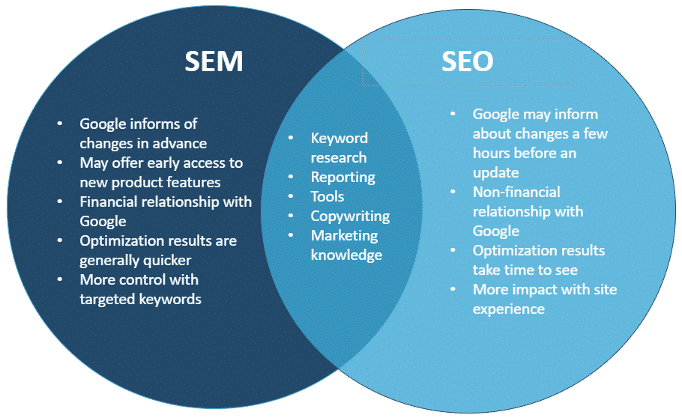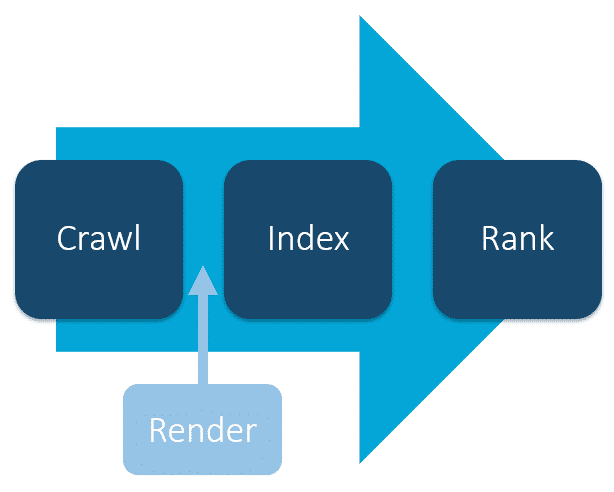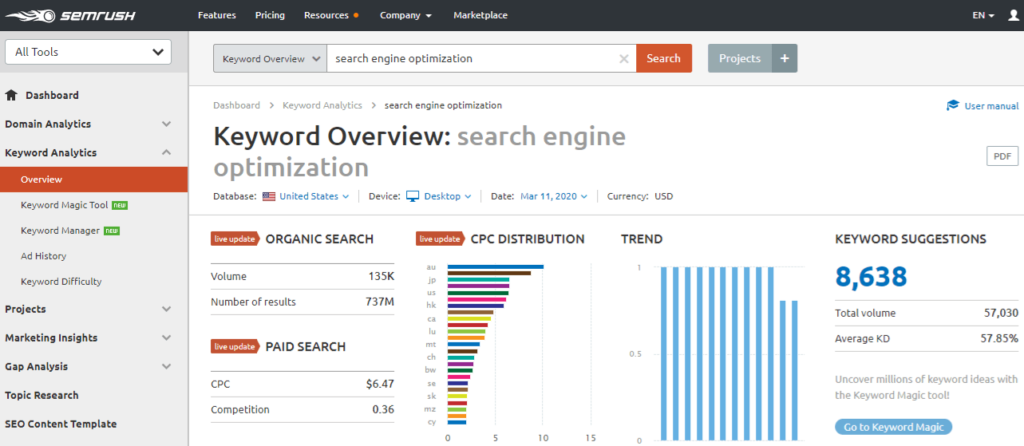
بروزرسانی: 22 آبان 1404
Searching for the Right Fit: What to Expect Moving from SEM to SEO
In our opinion, the principal hurdle of transitioning fromSEM to SEO is the technical knowledge that is required. This includes SEOjargon:
- How search engines crawl > render > index > rank sites
- What factors search engines consider when crawling and ranking pages (such as robots.txt, robots meta tags, XML Sitemaps, and other metadata)
- How websites operate and organize themselves
1. Be open about what you want to do and why you want it.
Overall, we both had unique experiences in moving from one side of the search industry to the other. Hopefully this post has shown that moving roles from one side of search to the other can be both satisfying and a valuable learning experience.
منبع: https://technicalseo.com/insights/blog/moving-from-sem-to-seo/
SEMs have a friendly and more direct relationship withGoogle, likely because it’s a paid channel. They generally have a Googlerepresentative who will help solve problems, suggest new features, such as alphasand betas for advertisers to participate in, and much more.
Another point of differentiation is overall controllability. Each channel has more control in opposite areas. When it comes to SEM, there is more control in the targeting sect. SEM can leverage demographic targeting, can easily test or change ad copy, and has more control over what keywords to rank for, due to match types. In SEO, there is more control on the site once a user lands on it. SEO can help to optimize the user experience after they get to the site. Unlike SEM, whose main job is to get users to the site, SEO can often help keep users engaged during their experience.
Our Best Tips and Takeaways to Make the Move from SEM to SEO
To make the transition easier, you’ll need to have a firm grasp of how advertising and digital marketing agencies operate. This includes having experience with client and agency relationships, project management, running status calls, general account management, business acumen, and putting the client’s needs first.
What Did We Have to Learn from Scratch?
Technical Hurdles
SEOs, on the other hand, have a very indirect relationship with Google, drawing learnings from thought leaders and a few authoritative Google employees who engage with the SEO community.\xa0
Preparing for Change:
Bonus: take a look at TechnicalSEO.expert, put on your SEO thinking cap, and see just how far you can get in the SEO challenges.
Often, people outside of the search realm assume SEO and SEM are the same thing. They’re both search marketing, right? But that’s far from the truth. SEO (search engine optimization), is a whole different ballgame than the SEM (search engine marketing, aka PPC (pay-per-click) or paid search) world.\xa0
The Two Most Notable Differences Between SEM and SEO
Google’s Role in the Relationship:
Reading industry blogs such as the one on TechnicalSEO.com, Search Engine Land, or Search Engine Journal can help you get up-to-date news on the SEO industry, so you know what is changing.\xa0Top industry professionals such as John Mueller and Barry Schwartz, and top thought leaders at Merkle like Max Prin and Alexis Sanders are on Twitter and have interesting insights within the SEO community.\xa0You can check out additional thought leaders on Twitter and at the Technical SEO blog.
Reporting is another skill that crosses over from SEM toSEO. Most clients will want to see weekly or monthly reports from bothchannels. In SEM, there tend to be more metrics and data points to report on(such as cost-based metrics like cost per conversion (CPC) and total spend).
Another skill set that can be easily transferred from SEM to SEO is copywriting. On the SEM side, you need to be succinct when writing ad copy, because there are strict character limits. You also have the advantage of A/B testing copy. This means you must get to the point quickly, which is something that is similarly sought after in SEO’s metadata.\xa0
Marketing Knowledge
Here are four tips for aneasy transition:\xa0
Moving from SEM to SEO
Control
In addition to understanding how keywords work, another element that was extremely helpful was our awareness of how paid search works. This knowledge allowed us to understand the organization, auction system, and navigation of Google Ads. Even to this day, the organization of SEM’s keywords has sprinkled into how both of us organize our keywords when building out our SEO content strategies.\xa0
Reporting and Tools
Another main difference is how much time it takes to seeresults from general optimizations. In SEM, adjusting bids, increasing budget,and pausing keywords result in near-immediate results (depending on budget andsearch volume). If you notice that you are ranking for an undesirable keyword,it’s as easy as adding a negative keyword and you can rest assured your sitewon’t rank for that query in the future.
The changes that are made on both sides of search also differ. For SEOs, a large amount of interpretation is needed to understand evolving search engines. On the other hand, SEMs have a better understanding of what is changing in their ecosystem. Because SEOs don’t work directly with Google and don’t have a financial relationship, there’s a lot of “test and learn” and insights drawn from the data gleaned from Google and other search engines. On the other hand, SEMs have their own Google Ads blog dedicated to the changes happening in Google Ads.\xa0

The SEM Skills that Can Be Carried Over to a Career in SEO\xa0
Essentially, understanding all the components that users are typically unaware of can be like drinking water from a firehose at the start. Grasping all of this is a learning curve that needs to be mastered before technical site audits are performed.

Timelines
Moving into a new role at your company, or even at anothercompany, is daunting. We know that firsthand because we both had over 4 yearsof paid search experiences before making the decision to move into SEO roles atMerkle. \xa0
The transition wasn’t always easy. We’ve both learned a lotfrom our experiences, and we’re giving you the inside scoop, so if you’removing to SEO from SEM, you can have a smooth transition (or maybe just learn athing or two about the other side of search marketing).
Keyword research is a big one (and perhaps the most obvious). Having an understanding of keyword elements such as: search volume, keyword relevance, long-tail vs short-tail keywords, and branded vs. non-branded keywords will provide a leg up when transitioning channels. Furthermore, many of the available keyword research tools (such as SEMrush) are in fact used by both channels. After all, the main goal of both SEM and SEO is to rank higher for relevant keywords.\xa0

Due to the similarities between the two channels, there are a handful of skills that do transfer over nicely from SEM to SEO. The top skillsets include keyword research, reporting, copyrighting, marketing knowledge, and agency operations. \xa0
Keyword Research
It is important to have a foundation of general marketing experience and knowledge. To maximize performance in both channels, you must understand user journeys, audience segmentation, keyword intent, and generally why and how consumers use search engines.\xa0
Agency Operations
Looking at existing websites by playing with free SEO tools and resources like those in TechnicalSEO.com or the free version of Screaming Frog, can help you to understand how websites work and give you a sense of how SEO can be incorporated into a website.
In search, you can’t talk about reporting without mentioning spreadsheets. With foundational spreadsheet skills in Excel and Google Sheets, you can use your reporting experience from SEM and apply it to SEO reports. Knowing how to use Excel aids with data analysis and manipulation, which is an integral part of keyword research. Lastly, knowing how to use other Google platforms, such as Google Analytics, Google Ads, and Google Data Studio eases the learning curve.\xa0
Copywriting
3. Take advantage of free resources.